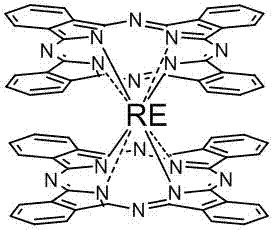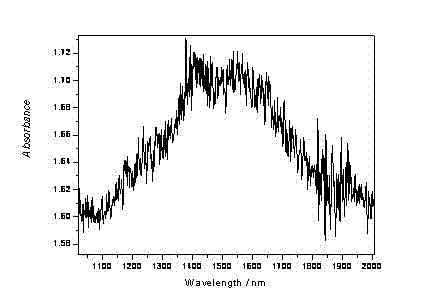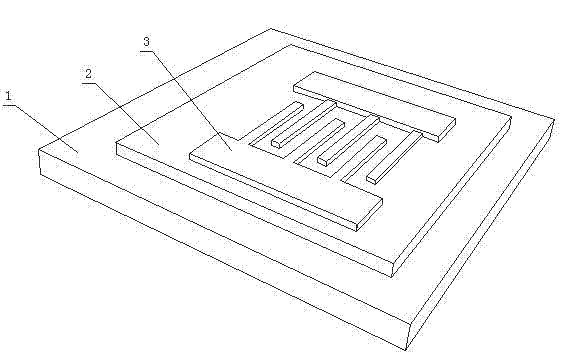Phthalocyanine rare earth organic infrared semiconductor light guide detector
A detector and semiconductor technology, applied in the field of optoelectronics, can solve the problems of few types of organic infrared semiconductors, low carrier mobility, high resistivity of photosensitive materials, etc., achieving considerable market prospects, controllable electrical parameters, and outstanding novelty Effect
- Summary
- Abstract
- Description
- Claims
- Application Information
AI Technical Summary
Problems solved by technology
Method used
Image
Examples
Embodiment 1
[0025] like image 3 As shown, the phthalocyanine rare earth organic infrared semiconductor detector with electrical controllability of the present invention includes: a substrate 1, and a metal or transparent conductive electrode 3 is prepared on the substrate by magnetron sputtering or electron beam evaporation method, Through the implementation of photolithography process, the electrode structure is made into interdigitated, serpentine, ring, strip, and spiral electrodes 2, and then the rare earth phthalocyanine is deposited on the electrode structure by solution casting, spin coating, printing or thermal evaporation Photosensitive layer 2; or on the substrate 1, deposit a rare earth phthalocyanine thin film by solution or thermal evaporation, then use a mask to cover the rare earth phthalocyanine thin film, and use thermal evaporation, electron beam evaporation or magnetron sputtering on the phthalocyanine Electrodes are deposited on rare earth films.
[0026] The materia...
Embodiment
[0037] A 30 nm Cr film and a 5 μm thick Au film were deposited on a quartz substrate by magnetron sputtering; a 2–3 μm thick photoresist was spin-coated on the Au film, and baked at 80°C for 5 minutes before drying under ultraviolet light. Exposure; form a certain strip pattern of the photoresist in the developer; bake the film at 80°C for 5 minutes to harden the film; use plasma etching or stripping technology to form the metal electrode into a strip pattern with a spacing of 3 μm; remove the photoresist , to obtain a metal electrode with a strip pattern on a quartz substrate; dissolve gadolinium phthalocyanine and iodine (mass ratio 95:5) in chloroform; drop the iodine-doped gadolinium phthalocyanine solution onto the metal strip electrode with a dropper, and wait until After the chloroform evaporates, the iodine-doped gadolinium phthalocyanine forms a film between the metal strip electrodes to form a device.
[0038] Example: 3
[0039] A 1 μm erbium phthalocyanine thin fi...
PUM
 Login to View More
Login to View More Abstract
Description
Claims
Application Information
 Login to View More
Login to View More - R&D
- Intellectual Property
- Life Sciences
- Materials
- Tech Scout
- Unparalleled Data Quality
- Higher Quality Content
- 60% Fewer Hallucinations
Browse by: Latest US Patents, China's latest patents, Technical Efficacy Thesaurus, Application Domain, Technology Topic, Popular Technical Reports.
© 2025 PatSnap. All rights reserved.Legal|Privacy policy|Modern Slavery Act Transparency Statement|Sitemap|About US| Contact US: help@patsnap.com



